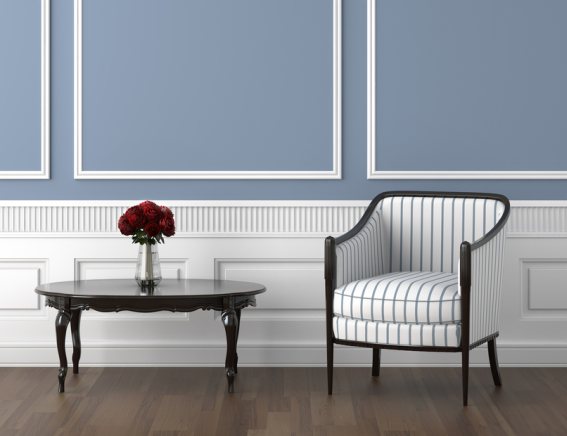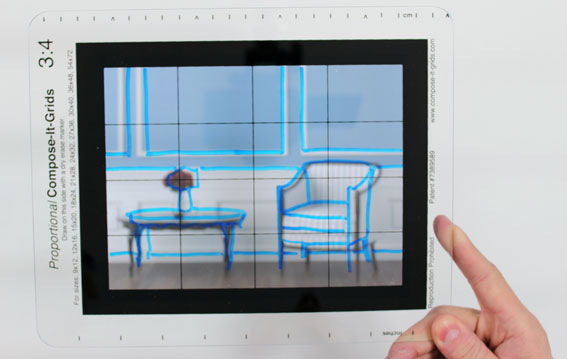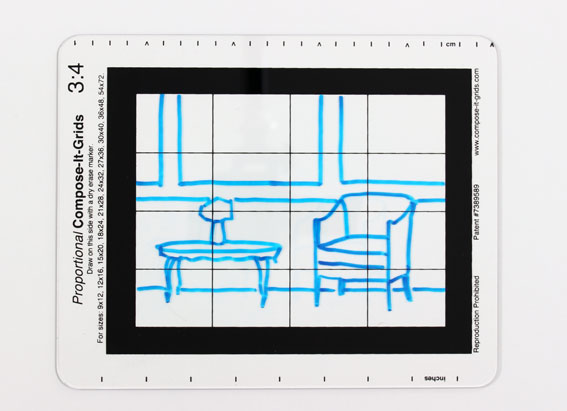How to sketch the 3D world.

This lesson shows you how to sketch three dimensional objects quickly and accurately on a two dimensional surface.
One of the hardest parts about drawing is translating real life 3d subjects into sketches on flat 2d paper. Our brains are so used to three dimensional objects that it’s very difficult to think in two dimensions. This is where the Artist’s Eye comes into play.
We have to trick our mind into seeing things as flat 2D shapes instead of the 3D objects we’re so familiar with. The easiest way of doing this is to turn the 3d objects right in front of us into a 2D sketch.
The Technique
Here’s how to sketch 3d subjects: Look through a clear viewfinder with one eye closed. Using a dry erase marker, sketch the subject right on the viewfinder.
This exercise shifts your minds perception and makes it easier to see things as flat 2D shapes instead of 3D objects. You are using the Artist’s Eye to transform the everyday three dimensional world into a flat two dimensional picture that you can trace.
For this exercise I use a special viewfinder called the compose-it-grid which is designed to be used with dry erase markers. The grid lines on the viewfinder help to divide up the space and the shapes of you subjects. The viewfinder is available in several different sizes that correspond to the standard sizes of papers and canvas that you will be using in the future.

Let's use this image again as an example of drawing three dimensional subjects on the compose-it grid.

I hold the grid up to the real life subjects I want to trace. Then with one eye closed, I trace the big shapes of the subjects.

Here is the result. Remember, this exercise is not about producing a beautiful drawing. It is about translating 3D subjects into flat 2D shapes. It is about learning to see with your Artist's Eye.
We will look at how to draw with grid lines a little later. It’s a great way to divide up complicated subjects and tackle them in bite sized chunks.
An alternative to the compose-it-grid is to draw on a piece of glass. Put tape around all the sides of the glass to create a viewfinder and also protect your fingers from the sharp edges of the glass. (Remember, glass is very sharp and you have to be very careful when handling it).
This is a great exercise to use before you start any finished drawing or painting.
Hold up the viewfinder and trace the shapes with one eye closed. It’s fast, and you’ll immediately see the shapes of your subject. It’s also a great composition tool that lets you quickly see your subject in a variety of different orientations on the page.
Now that you know how to sketch the 3D world it will help your Artist’s Eye grow stronger.
Next we'll help your Artist’s Eye simplify complex objects into easier to draw abstract shapes.
Lesson 6: Upside down drawing for beginners
Home › Drawing Essentials: Level 1 › Lesson 5: How to sketch the 3D world




